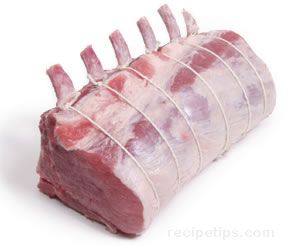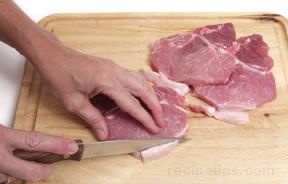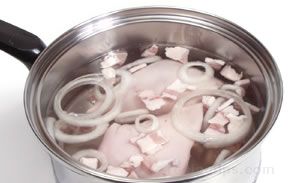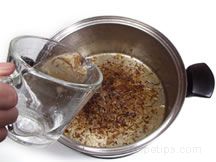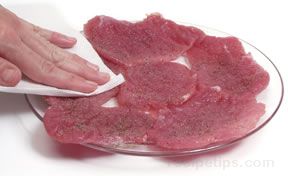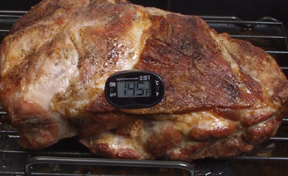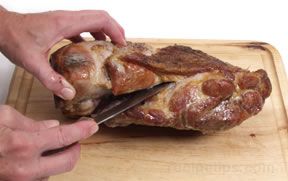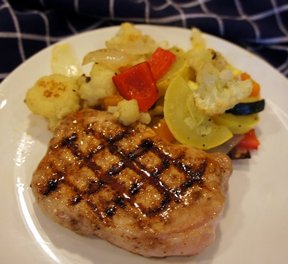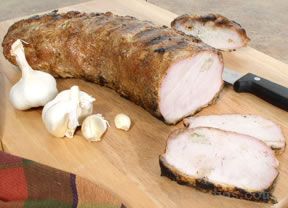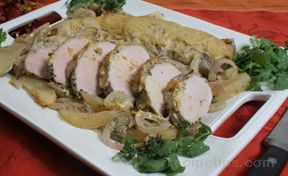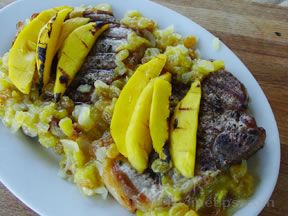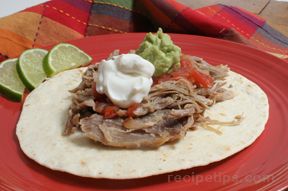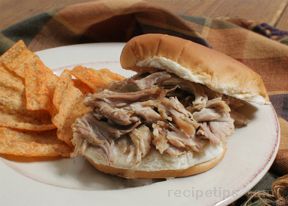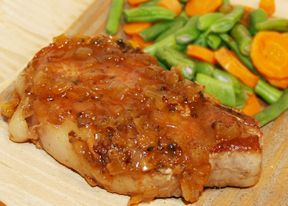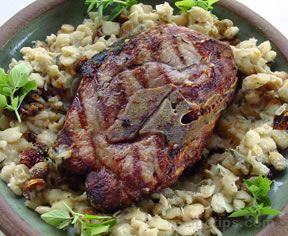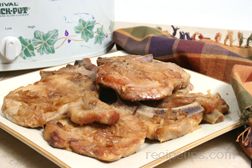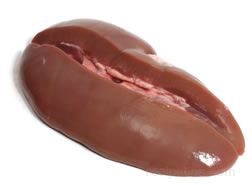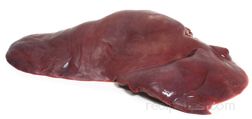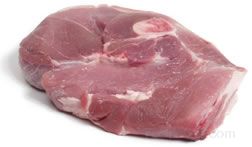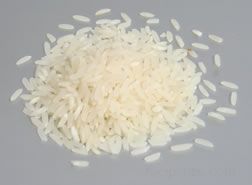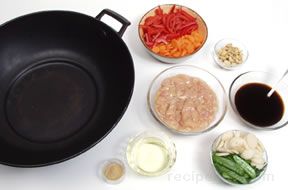|
Stir-frying, like sautéing, is a dry heat cooking method that quickly cooks the pork in a small amount of oil, using high heat. The difference between the two methods is that sautéing cooks pieces of meat that are about the size of a serving portion and stir-frying involves cooking smaller pieces of food that have been cut into small strips or cubes all similar in size. Stir-frying generally includes other ingredients that are cooked together with the meat. The different foods that are cooked when stir-frying usually require cooking at different intervals. They are stir-fried according to how quickly the foods cook. The process starts by cooking the pork and the slowest cooking vegetables first, such as carrots, cauliflower and onions. Vegetables such as broccoli, green beans, peppers, sugar snap peas and snow peas are added several minutes after the first ingredients and then the fast cooking vegetables such as mushrooms, celery, peas, and scallions are added last. Any fresh herbs should be added at the very end of the cooking time. Fruit is also used in many stir-fry recipes and should be added as directed by the recipe. Stir-frying is a fast paced cooking method so it is important that everything is ready before beginning the process. Oil, pork, vegetables, seasonings and sauce ingredients should be premeasured and within easy reaching distance. The pan used for stir-frying should be a heavy skillet with deep sides to allow the ingredients to be stirred and tossed without spilling over the edges of the pan while cooking. A wok, which has deep tapered sides that make it easy to stir and toss the ingredients as they are cooking, is a traditional pan used for stir-frying. Although a wok works well it is not a necessity and a nonstick deep skillet also works very well. Before starting the cooking process be sure the pork and all other ingredients are cut, measured and within easy reach. Remove excess moisture from the pork by patting dry with a paper towel. Start the cooking process by heating the oil in the pan over a medium-high heat, trying to coat the entire surface, bottom and sides, with the oil. Use only enough oil to prevent food from sticking, approximately 1 ½ to 2 tablespoons of oil per pound of ingredients being cooked. Vegetable, corn and peanut oil all work well for stir-frying. When the pan is hot (a piece of food should sizzle as soon as it touches the pan), add the meat and the other longer cooking ingredients required, making sure all ingredients are exposed to the oil and the hottest area of the pan. Cook uncovered over medium-high heat for several minutes, constantly stirring and tossing the ingredients. Continue to add ingredients at the proper stages as requested by the recipe being used. Continue to cook on medium-high heat until the pork is completely cooked and other ingredients are tender but still have a crunchy texture. The food will cook quickly so it is important to add the ingredients at the proper times, being careful not to overcook, which would result in tough, dry meat. If desired, push cooked ingredients to the side of the pan to make a sauce from the pan drippings. Then stir the cooked ingredients back into the sauce to mix them together and serve immediately. Stir-fry Tips:
|
Loading
Stir-Frying Pork


Provided By
RecipeTips
RecipeTips

Loading
There currently aren't any reviews or comments for this article. Be the first!
Advertisement
Advertisement



